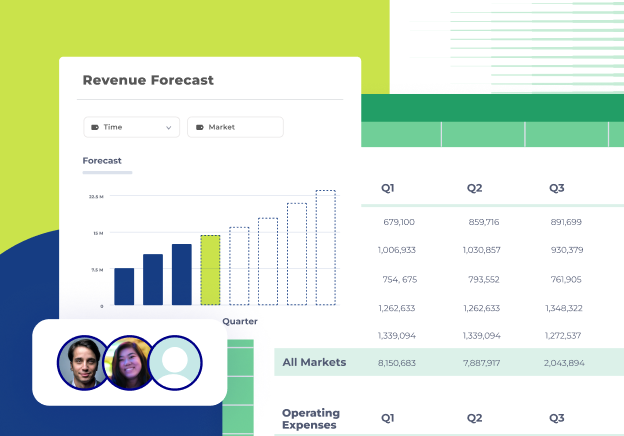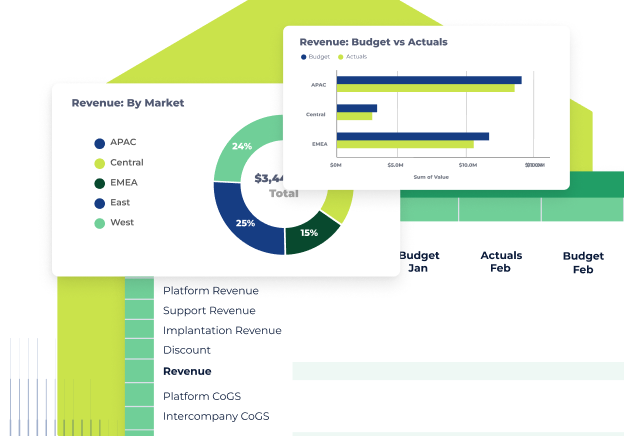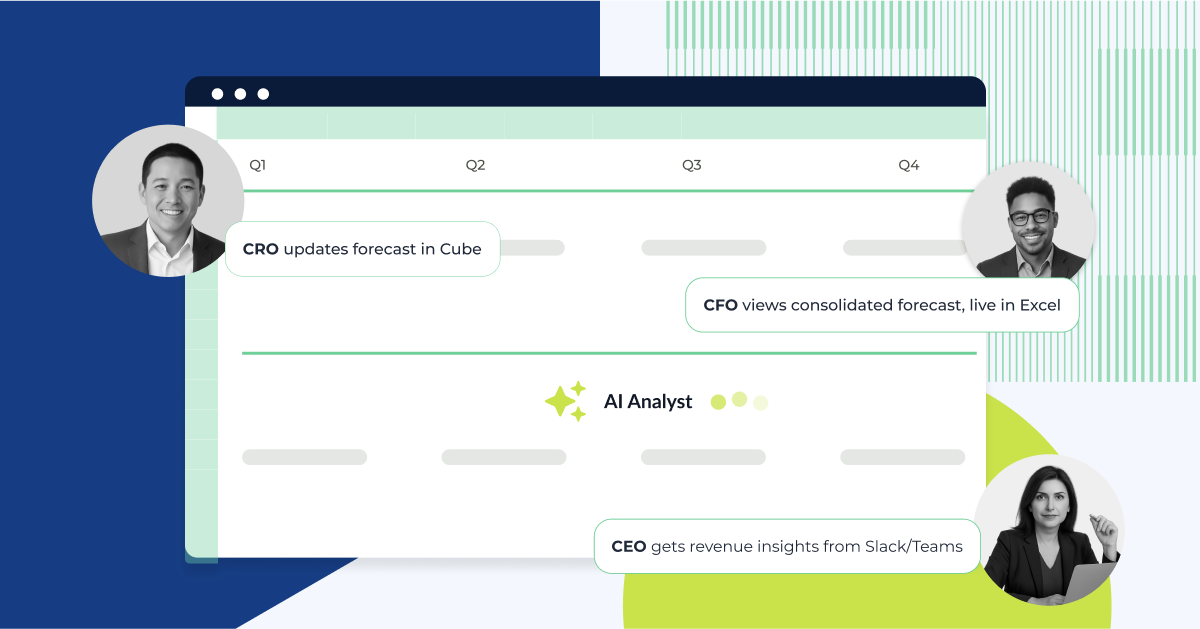Key takeaways on data hygiene
- Data hygiene is the process of keeping your data clean of errors, inconsistencies, and obsolete information.
- Maintaining clean data is paramount for FP&A teams, who need precise financial analyses and forecasts to make strategic business decisions.
- Poor data hygiene can have serious consequences, including misguided investments, missed opportunities, and financial losses.
- Maintaining data hygiene involves implementing regular data cleansing and validation, leveraging FP&A software, and establishing clear data governance policies, among other best practices.
Understanding data hygiene
Data hygiene refers to the process of ensuring that your data is clean, accurate, and reliable. In the world of FP&A, this means having data that you can trust to make informed decisions. Without proper data hygiene, you risk working with outdated, duplicated, or incorrect information, which can lead to costly mistakes.
Data hygiene vs data integrity
Data hygiene focuses on the process of keeping your data clean and organized, while data integrity is the outcome of those efforts. For example, regularly cleaning your data by removing duplicates or fixing errors supports the integrity of your financial information. It’s all about making sure your financial information stays accurate, consistent, and reliable.
Data integrity is the backbone of sound decision-making. Without it, even the most well-intentioned strategies can falter because they rely on flawed data. It also plays an important role in compliance, especially with regulations like the General Data Protection Regulation (GDPR), which require organizations to establish strong, traceable, and secure data management practices.
You can uphold your company’s data integrity with the help of automation software. Automating repetitive tasks, such as reconciliation or data validation, reduces human errors and improves the consistency of your financial reports.
Data hygiene vs data quality
Data quality is the end goal of maintaining good data hygiene. Neglecting data hygiene quickly translates into poor data quality, which creates unnecessary risk when making important financial decisions. For example, if outdated data isn’t removed, reports can provide misleading insights that steer your business off course.
Maintaining high data quality starts with consistent data management practices. This includes setting clear standards for data entry, running frequent checks for errors or duplicates, and ensuring all information stays relevant. Training teams on best practices also helps avoid mistakes before they happen.
Of course, data hygiene is about more than cleaning up data: it’s about building a strong foundation for better, more reliable insights. Maximizing the quality of your company’s data through consistent data hygiene practices means more time spent on strategy and less time fixing issues caused by bad information.
Why is data hygiene important for finance?
Clean data is the foundation of accurate financial reporting and forecasting. It allows you to identify trends, spot opportunities, and make strategic decisions with confidence. Plus, it saves time and resources that would otherwise be spent on correcting errors and reconciling discrepancies.
Common data issues FP&A teams face include duplicate entries, missing information, and inconsistencies in data formats. These problems can arise from various sources, such as manual data entry errors, integration issues between different systems, or lack of standardized data entry protocols.
Understanding and prioritizing data hygiene is the first step toward leveraging your financial data effectively. By maintaining clean data, you set the stage for more accurate analysis, better decision-making, and ultimately, a stronger strategic position for your organization.
How data hygiene works
Data hygiene involves maintaining the accuracy, consistency, and completeness of data within a database to make sure it's reliable and usable. In FP&A, this means ensuring the financial data you rely on for reporting, forecasting, and planning is error-free and precise.
Here’s an overview of how data hygiene works and some of the processes involved.
1. Identifying and correcting errors
The first step is spotting and fixing errors like typos, outdated entries, or mismatched data. For example, a wrongly entered expense category or a misspelled vendor name can snowball into reporting inaccuracies. Automated tools help flag these issues quickly, while manual reviews add an extra layer of confidence. Addressing these errors upfront ensures your data is solid and dependable.
2. Deduplication and normalization of data
Duplicate records can cause confusion and inflate numbers. Deduplication removes redundant entries to streamline your database. Normalization, on the other hand, brings consistency—like ensuring all financial transactions follow the same date format or aligning customer names to a standard structure. Together, they keep your data consistent and organized, making analysis more straightforward.
3. Data cleaning
Cleaning data involves removing irrelevant or incomplete information. Think of data gaps, like missing invoice numbers or incomplete customer details, which disrupt reporting. It ensures every data point being used by your financial reporting software is accurate and complete. The result? For FP&A teams, reliable forecasts and reports without second-guessing every figure.
4. Data enrichment
When you add missing information to existing data to make it more accurate and complete, this is known as data enrichment. The process involves verifying data to make sure it’s up-to-date, supplementing data with additional information to make it more insightful, and consolidating data so it’s easier to access and use. Data that’s precise, thorough, and comprehensive enhances your ability to identify trends and make informed business decisions.
5. Validation and standardization
Validation checks confirm that data aligns with established rules. For instance, making sure that all revenue entries match the correct fiscal year or that tax codes are formatted properly. Standardization applies consistent formats and naming conventions across records to avoid discrepancies. When your data is both validated and standardized, it becomes easier to trust and use for decision-making.
6. Regular audits and monitoring
Keeping data clean isn’t a one-off task. Regular audits catch mistakes early, like duplicate entries or outdated records, and monitoring ensures your database doesn’t veer off track. Monthly or quarterly reviews can help you stay ahead of potential problems. This process saves time by preventing errors from building up and making future analysis smoother.
7. Data profiling
Data profiling helps evaluate the structure, quality, and usability of your data. Before cleaning, it identifies issues like inconsistent formats or missing fields. After cleaning, profiling measures improvements and ensures your data meets the team’s needs. For FP&A leaders, this is a key step to maintaining accurate and actionable financial data.
Proper data hygiene practices set the stage for better analysis and decisions, building confidence in your numbers and strengthening your strategic focus.

Key benefits of data hygiene
Clean, reliable data is the cornerstone of effective FP&A. By prioritizing data hygiene, organizations can unlock the full potential of their financial data, leading to improved efficiency, enhanced decision-making, and better regulatory compliance reporting.
Some of the key advantages of tidying your financial data include:
- Improved accuracy: Clean data ensures that financial reports are accurate and trustworthy, reducing the risk of errors that can lead to misinformed decisions and potential compliance issues. Accurate data also enhances forecasting, allowing FP&A teams to predict future financial performance with greater confidence.
- Enhanced decision-making: Good data hygiene enables FP&A leaders to derive actionable insights from their data, supporting better planning and resource allocation. Increased confidence in data quality leads to more decisive and effective actions.
- Increased efficiency: Clean data reduces the need for time-consuming manual corrections and reconciliations, streamlining workflows and allowing teams to focus on strategic tasks. By minimizing errors and inconsistencies, organizations can better allocate their resources, ensuring that time and effort are spent on value-adding activities.
- Regulatory compliance: Maintaining clean data is essential for financial compliance management and avoiding fines. Accurate data ensures that financial reports and other regulatory submissions are compliant with legal standards, simplifying the auditing process and making it easier to provide accurate information to auditors.
- Resource optimization: Organizations can optimize their resources by reducing the time and effort spent on fixing data issues, allowing FP&A teams to focus on higher-value activities such as strategic analysis and forecasting.
- Data-driven insights: Clean data enables FP&A leaders to extract meaningful insights that can drive business growth and efficiency. Reliable data supports better decision-making and helps identify opportunities for improvement.
- Audit readiness: Good data hygiene simplifies the auditing process, ensuring that accurate and complete information is readily available for auditors.
What is the financial impact of poor data hygiene?
Poor data hygiene can have far-reaching consequences for FP&A leaders, affecting both daily operations and long-term strategic decisions. When data is inaccurate or inconsistent, the entire decision-making process is compromised, leading to inefficiencies and potential missteps. These might include:
Operational inefficiencies
- Time wasted: Teams often spend countless hours manually cleaning and verifying data. This time could be better spent on analysis and strategic planning, but instead, it drains productivity and delays critical tasks.
- Delayed reporting: Financial reports and forecasts are essential for timely decision-making. When data is dirty, the process of correcting errors can push back deadlines, causing significant disruptions in reporting schedules.
- Reduced productivity: Employees become less efficient as they are forced to focus on fixing data issues rather than performing higher-value tasks. This not only hampers individual performance but also impacts team morale and overall effectiveness.
Strategic missteps
- Financial losses: Decisions based on flawed data can lead to severe financial repercussions. For example, overestimating revenue projections due to inaccurate data can result in overspending and cash flow issues.
- Misguided investments: Inaccurate data can skew investment analyses, leading to poor allocation of resources. Companies might invest in projects with little potential while ignoring more lucrative opportunities.
- Missed growth opportunities: Relying on incorrect forecasts can cause businesses to miss out on expansion possibilities. For instance, underestimating market demand due to faulty data can lead to stock shortages and lost sales.
- Damaged reputation: Consistent data errors can harm a company's reputation, particularly if these inaccuracies reach clients or stakeholders. Trust is hard to rebuild once stakeholders doubt the reliability of your data.

Best practices for maintaining data hygiene
Now that you can see why data hygiene is so important and beneficial to your organization, it's time to answer the question on everyone's minds: How does one maintain clean, reliable data?
There are many tools and techniques you can use to keep your financial data in tip-top shape. Here are some actionable best practices that can help ensure your financial data remains clean, accurate, and reliable:
1. Implement regular data cleansing and validation
Regular data cleansing and validation involves setting up a system to routinely review and correct inaccuracies. Start by prioritizing areas where errors are most likely to happen, such as entries that are frequently updated or transferred between systems. Use automated tools to identify duplicates, missing values, or formatting issues. Pair automation with manual checks for high-priority data to ensure accuracy across the board.
For teams just getting started, focus on one dataset at a time. Trying to fix everything at once can overwhelm your team. Begin with critical financial data, like revenue or expense records, and expand your efforts gradually.
2. Leverage FP&A software
Use specialized FP&A software to streamline data collection, validation, and analysis. The best FP&A software can:
- Automate data cleaning and validation: These tools can automatically detect and correct errors, identify duplicates, and fill in missing data, saving time and reducing manual intervention.
- Centralize data management: FP&A software provides a unified platform for managing all your data, ensuring that all departments input and access data through a central system to avoid discrepancies and improve consistency.
- Facilitate data integration: Integration features allow data from different sources to be accurately combined and kept consistent, preventing errors during data transfers.
- Enhance data accuracy and reliability: Advanced analytics and real-time insights help ensure that your financial data is always up-to-date and reliable.
- Improve reporting and forecasting: The software can generate accurate financial reports and forecasts, supporting better decision-making and resource allocation.
- Support data governance: FP&A tools often include features for establishing and maintaining data governance policies, ensuring compliance with data management standards.
3. Conduct regular data hygiene audits
Schedule routine data quality checks to identify and fix errors, duplicates, and inconsistencies. Make it a monthly or quarterly task to ensure ongoing data integrity. These audits should involve cross-checking data entries, validating data against source documents, and using automated tools to detect anomalies.
4. Implement standardization
Develop and enforce standard data entry protocols and formats across your organization. Standardization includes defining data formats, setting naming conventions, and establishing procedures for data entry. Map out standardizations for details like:
- Mailing addresses: Will you input abbreviated or non-abbreviated mailing address details? For example, “Street” versus “St.,” “West” versus “W,” or “Apt.” versus “Unit.”
- Titles and other common abbreviations: Will you include “Dr.” at the beginning of your contact’s name or “MD” after it? Will you abbreviate the job title of “Chief Financial Officer” or leave it as-is?
- Phone numbers: Do you need to include the country code, or are all of your contacts located in your country? Will you include brackets around the area code? Will you include dashes or input digits only?
Consistent data entry practices reduce the risk of errors and make data easier to manage and analyze. Once your data entry protocols and formats are established, set up templates and guides that all team members can access to further reduce future errors and confusion.
5. Train employees regularly
Organize regular training sessions to educate staff on the importance of data hygiene and proper data management practices. Provide continuous education to keep everyone up-to-date with the latest procedures. Training should cover data entry standards, the use of data management tools, and the importance of maintaining data quality.
6. Establish clear data governance policies
A data governance policy sets the tone for how your company’s data is processed and handled. In addition to detailed guidelines for data entry, storage, and access, a good policy should include clearly defined roles and responsibilities—who owns the data, who maintains it, and who uses it.
Some essential types of data governance rules to define in your policy include:
- Data accuracy: How to ensure your data remains accurate, consistent, and free of errors. Plus, the steps to take when errors are found.
- Data privacy: How sensitive data is protected, such as encryption and compliance with privacy regulations.
- Data retention: How long data should be retained and the right ways to dispose of it.
- Data sources: Where your data is sourced from and the processes used to aggregate and manage it.
- Data standards: What constitutes high-quality data, such as formatting and completeness, along with processes for data validation and cleansing.
- Data storage: Where your data is stored and the specific security measures that are in place to protect it.
- Data users: Who can access and use your company’s data and for what purposes.
Make these policies accessible to everyone and review them regularly to keep them relevant, as per your company’s needs and industry regulations.
7. Maintain regular updates
Keep your data management systems and software up-to-date with the latest versions. Schedule regular maintenance checks to ensure all tools are functioning correctly and can handle current data standards. Regular updates and maintenance prevent software obsolescence and ensure that your data management tools continue to operate effectively.
8. Assign data ownership and accountability
Designate specific individuals or teams responsible for data hygiene. Clearly define their roles and responsibilities to ensure accountability and adherence to data hygiene practices. Data owners should oversee data quality, foster data integrity, ensure compliance with data governance policies, and address data-related issues promptly.
Become a clean, mean, data-driven machine
Keeping your data clean and accurate is essential for making smart decisions and running efficient operations. By following the data hygiene best practices listed above, you can turn your financial data into a reliable asset.
To take your data hygiene to the next level, download our free financial management guide. It’s packed with practical tips that will help you improve your data management processes, boost the accuracy and reliability of your data, and strengthen your company’s long-term data integrity.



.png)









.png)
.png)
.png)




.png)
.png)